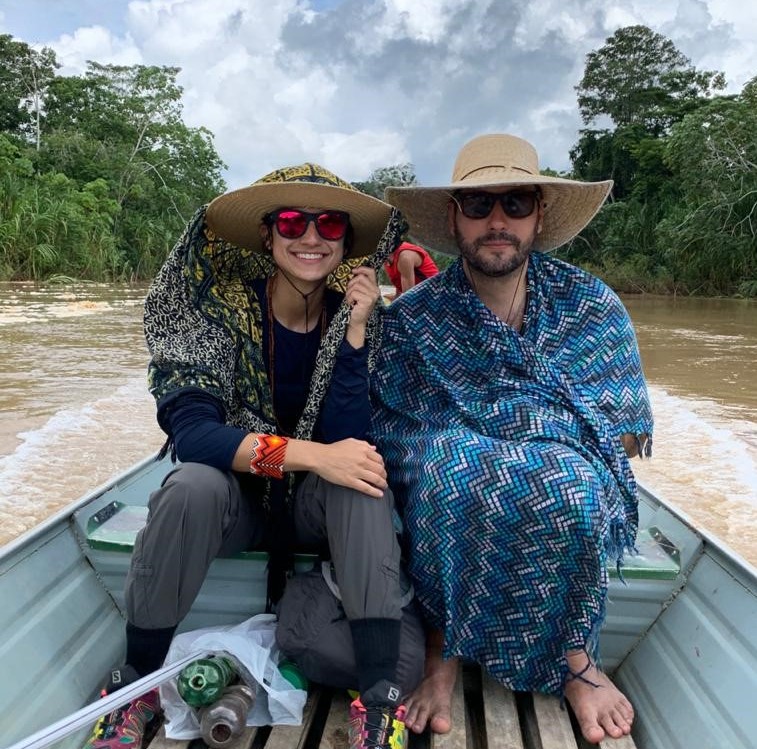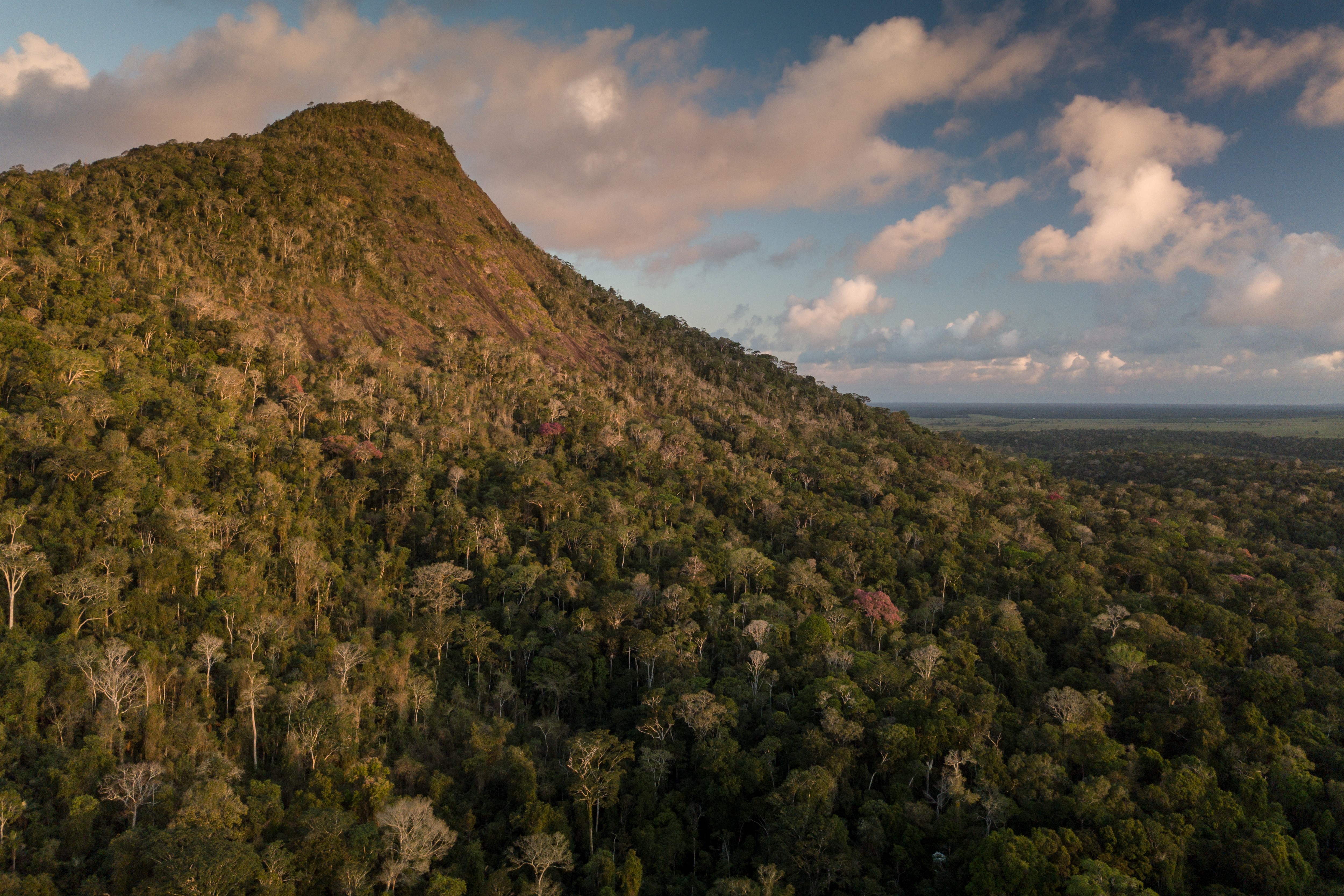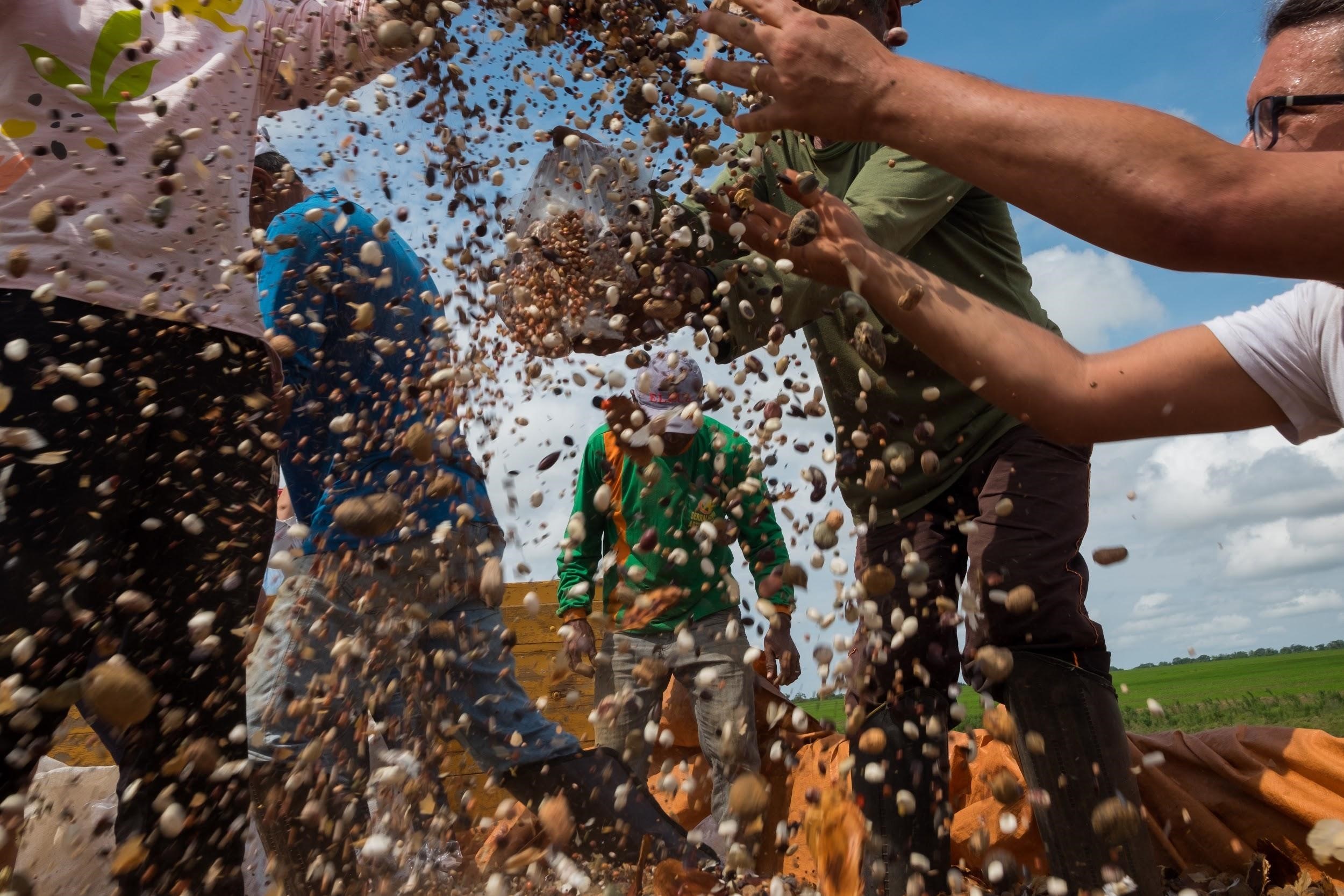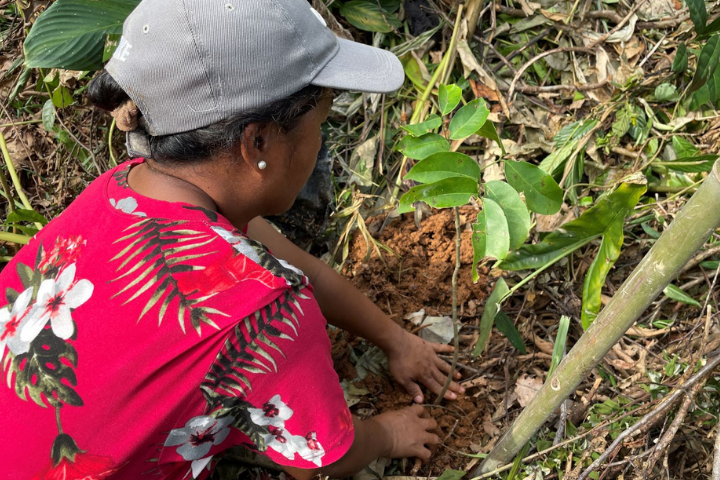Restoring Brazil’s rainforests isn’t just about carbon and trees — it’s about people
September 20, 2022 | By Miguel Moraes
Every year, wildfires sweep through protected areas in Brazil’s rainforests, burning trees, wild animals, and plants precious to the people who lives there. August and September are the Amazon’s burning season, and fires alerts surged in August, new government data shows, the most that month since 2010. Almost 20% of the Amazon rainforest has disappeared since the 1970s.
We are now in a do-or-die moment when it comes to protecting this precious ecosystem.
Brazil is a large country spanning 3.2 million square miles, and with that comes plenty of biodiversity. The rich way the climate, plants, animals and people are tied to the land has always given me a sense of purpose. I am a plant ecologist who has spent a lot of time carrying out plant inventories deep in the Amazon, each field trip making me fall a little more in love with it. When you are out there, living the intimate connection between people and nature, you can feel in your guts that nothing will be the same for you. It is a deep, life-changing experience.

Conservation International Brazil's Miguel Moraes with his wife on the Gregorio River in the western state of Acre after a visit with the Yawanawá, an indigenous people working to preserve their connection to nature. (Photo courtesy of Miguel Moraes)
The Amazon rainforest, the world’s largest, crosses nine countries, but 60% of the once-lush jungle land is within Brazil’s borders. Deforestation in the Brazilian Amazon is mostly related to illegal activities, including timber extraction, mining, land grabbing, and territorial invasions.
The scientific evidence is telling us that these activities are putting us in a dangerous spot. The Amazon is nearing a tipping point, in which rising temperatures could flip it to a savannah-like ecosystem, with fewer trees, large grasslands, and a dry climate. Many species that were used to the Amazon’s moist conditions are struggling to survive.
If we continue on this path, the forest will lose its capacity to sequester carbon, causing it to start dumping huge amounts of carbon into the air. If the Amazon starts spewing large amounts of carbon into the air, this will make the world’s carbon emissions problem exponentially worse. Not only we would compromise nature’s capacity to self-regulate, but also nature’s capacity to regenerate.
Then there’s the impact on agriculture, which both feeds people and provides an opportunity for farmers to earn a living. Much of South America’s hydrological cycle — how water is transferred through soil, rocks, and the atmosphere — depends on the Amazon’s humidity.

A view of Bahia's Monte Pascoal, in the coastal Atlantic Forest. Deforestation threatens the rainforests of Brazil, reducing its capacity to sequester carbon and worsening the world's carbon emissions problem. (Photo credit: Flavio Forner/Conservation International )
For the indigenous people of the Amazon, the territorial invasions and illegal activities have led to food insecurity, disease and power disputes. In the long term, they led to cultural erosion. As traditions are crushed, cultural identities are lost. Traditional languages and songs are forgotten. Gradually, values and beliefs are influenced. There is a rupture of the fundamental relationship between people and nature.
The severity of the problem is real, and time is of the essence. As of today, there’s no technology that could act as a substitute for the rainforest. That’s why conservation and reforestation efforts, including the Priceless Planet Coalition, are so critically important.
Launched by Mastercard in January 2020 with my colleagues at Conservation International and World Resources Institute, the Priceless Planet Coalition unites the efforts of consumers, financial institutions, merchants and cities to fight climate change through the restoration of 100 million trees over five years.
I’m excited that many of those trees will grow in Brazil, in the Amazon and in the Atlantic rainforests. In the short term, these trees will transform degraded land into regenerating ecosystems. In the long term, the benefits will be felt by every person, plant and animal connected to these rainforests.
Since the launch, the coalition’s commitment has grown to a total of 18 projects across the globe. That includes the Abrolhos region of Brazil, where we at Conservation International plan to restore 2 million trees on nearly 2,000 acres.
Additionally, in the Amazon and Atlantic forests, we have a goal to restore 2 million trees over 2,790 acres to combat deforestation while protecting biodiversity. To date, we have planted 865,798 trees.

The farming technique known as muvuca involves planting a large mixture of seeds to yield native plants, restoring the soil of degraded areas and growing diverse forests. Here, workers prepare seeds for a muvuca spreading at a restoration site outside Xingu Indigenous Park in the state of Mato Grosso, in west central Brazil. (Photo credit: Inaê Brandão/Conservation International)
Once, a Yawanawá leader told me that she led her village in a quest for identity. She realized that they would never be anything else but indigenous and their only pathway was to reconnect with nature — to once again establish an intimate relationship with the forest that has influenced their culture for centuries.
That’s why, within our restoration plan, we also included 17 native species that can serve as food, medicine or religious ornaments for locals. You’re probably familiar with at least a few of them, including the cocoa tree, Brazil nut and acai. By protecting these plants, the forest will be serving the needs — physical and spiritual — of surrounding communities while safeguarding the biodiversity that serves everyone on this planet.
This story was originally published on April 21, 2021. It was updated to reflect updates on the Priceless Planet Coalition's tree-planting initiative and new statistics for wildfires in the Amazon rainforest.
sustainability
Restoration doesn't stop at the sapling
To turn reforestation efforts into ecosystem restoration, we need to shift the focus away from simply putting trees in the ground and toward their growth. Experts at Conservation International and World Resources Institute explain why — and how.
Read more